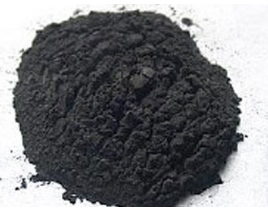With the rapid development of global new energy vehicles, the market demand for lithium battery anode materials has increased significantly. According to statistics, the planned expansion capacity of the top eight lithium battery anode companies in the industry in 2021 is nearly one million tons. The graphitization process has the greatest impact on the index and cost of negative electrode materials. There are many types of graphitization equipment in China, high energy consumption, heavy pollution, and low degree of automation, which limit the development of graphite negative electrode materials to a certain extent. It is an urgent need in the current negative electrode material production process. main problem solved.
1 Status and comparison of anode graphitization furnaces
Acheson Anode Graphitization Furnace
An improved furnace type based on the traditional electrode Acheson furnace graphitization furnace, a graphite crucible is placed in the original furnace as the carrier of the negative electrode material (the carbonized negative electrode raw material is placed in the crucible), the furnace core is filled with heating resistance materials, and the outer layer is made of Insulation material and furnace wall insulation. After power-on, it mainly relies on the heat of the resistance material to generate a high temperature of 2800-3000 °C, which indirectly heats the negative electrode material in the crucible, and finally achieves the high temperature graphitization of the negative electrode material.
Internal heat series graphitization furnace
This furnace model draws on the series graphitization furnace used for the production of graphite electrodes, and several electrode crucibles (with negative electrode materials inside) are connected in series vertically. The electrode crucibles are both carriers and heating elements. The current passes through the electrode crucibles to generate high temperature and directly heat the internal negative electrode materials. No resistance material is used in the graphitization process, which simplifies the process of loading and unloading, reduces the heat storage loss of the resistance material, and saves power consumption
Grid Box Graphitization Furnace
The application of this furnace type has been increasing in recent years. It mainly absorbs the technical characteristics of the traditional Acheson graphitization furnace and the series-connected graphitization furnace. The anode raw materials are fixed between the anode plates through four-sided slotted connecting columns, and the upper and lower parts of each material box are sealed with anode plates of the same material. The column and the anode plate that make up the material box structure together form the heating body. The current is sent to the heating body of the furnace core through the furnace head electrode, and the generated high temperature directly heats the negative electrode material in the box to achieve the purpose of graphitization.
2 Development direction of anode graphitization furnace
Optimizing the perimeter wall structure
At present, the furnace body insulation layers of several graphitization furnaces are mainly carbon black and petroleum coke filled around the furnace core. This part of the thermal insulation material is burnt out by high temperature oxidation during production, and each time it is loaded out of the furnace, a part of the peripheral thermal insulation material needs to be replaced or supplemented. During the replacement process, the environment is poor and the labor intensity is high.
It can be considered that one is to use special high-strength high-temperature cement to build the furnace wall clay bricks to improve the overall strength and ensure that the wall is stable and not deformed during the entire operation cycle. And the gap between the bricks enters the furnace, reducing the oxidative burning loss of the insulation material and the negative electrode material;
The second is to suspend and install an integral large movable insulation layer on the outside of the furnace wall, such as high-strength fiberboard or calcium silicate board, etc., which can effectively seal and heat preservation in the heating stage, and can be easily removed in the cooling stage to facilitate rapid cooling; Ventilation ducts are set in the furnace bottom and furnace wall, and the ventilation ducts adopt a prefabricated lattice brick structure with sub-mother openings. At the same time, it is matched with high-temperature mortar masonry, and forced ventilation cooling is considered in the cooling stage.
Optimizing the transmission curve by means of numerical simulation
At present, the power transmission curve of the negative electrode graphitization furnace is formulated based on experience. During the graphitization process, it is artificially adjusted at any time according to the temperature and furnace conditions, and there is no unified standard. Optimizing the heating curve can significantly reduce the power consumption index, and it is also a reliable guarantee for the safe operation of the furnace. Scientific means should be used to establish a targeted numerical model according to various boundary conditions and physical parameters to analyze the relationship between the current, voltage, total power and cross-section temperature distribution during the graphitization process, so as to formulate a suitable heating curve, and in practice. Continuous adjustment during operation. For example, high-power transmission is adopted in the early stage of power transmission, and then the power is rapidly reduced and then slowly heated up, and the power is reduced again at the end of the power-on until the power-on is completed.
3 Conclusion
The graphitization process is the biggest problem that plagues lithium battery anode material manufacturers. The fundamental reason is that several periodic graphitization furnaces widely used at present still have problems in terms of power consumption, cost, environmental protection, degree of automation, and safety. The future trend of the industry is to develop towards a furnace structure with fully automated, organized discharge and continuous production, and to support mature and reliable auxiliary process facilities. At that time, the graphitization problems that plagued enterprises will be significantly improved, and the industry will enter a period of stable development, boosting the rapid development of new energy-related industries.

